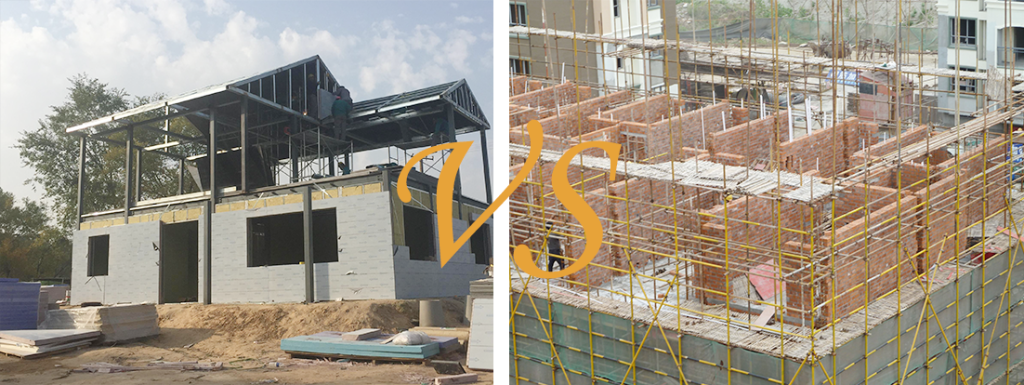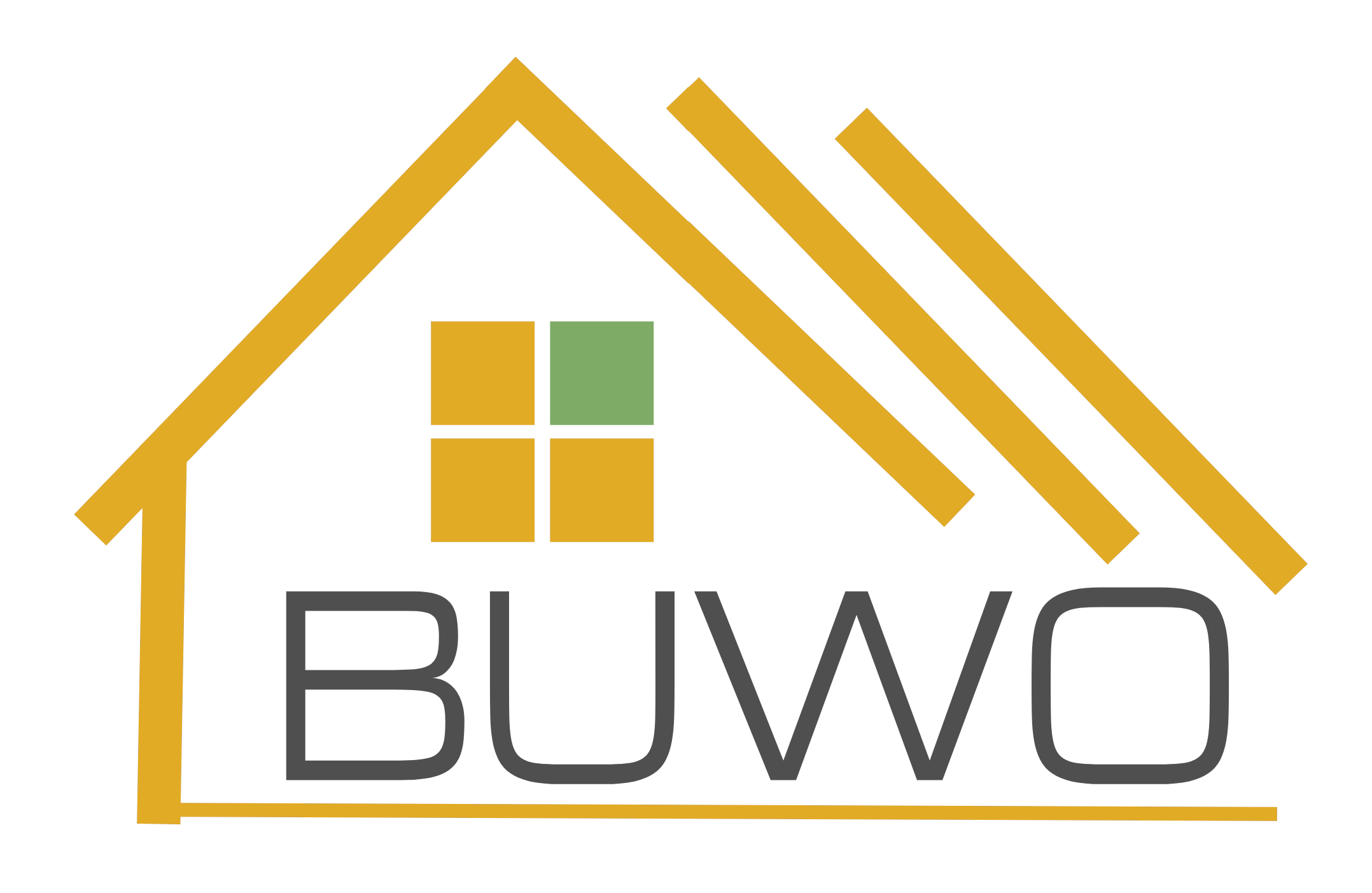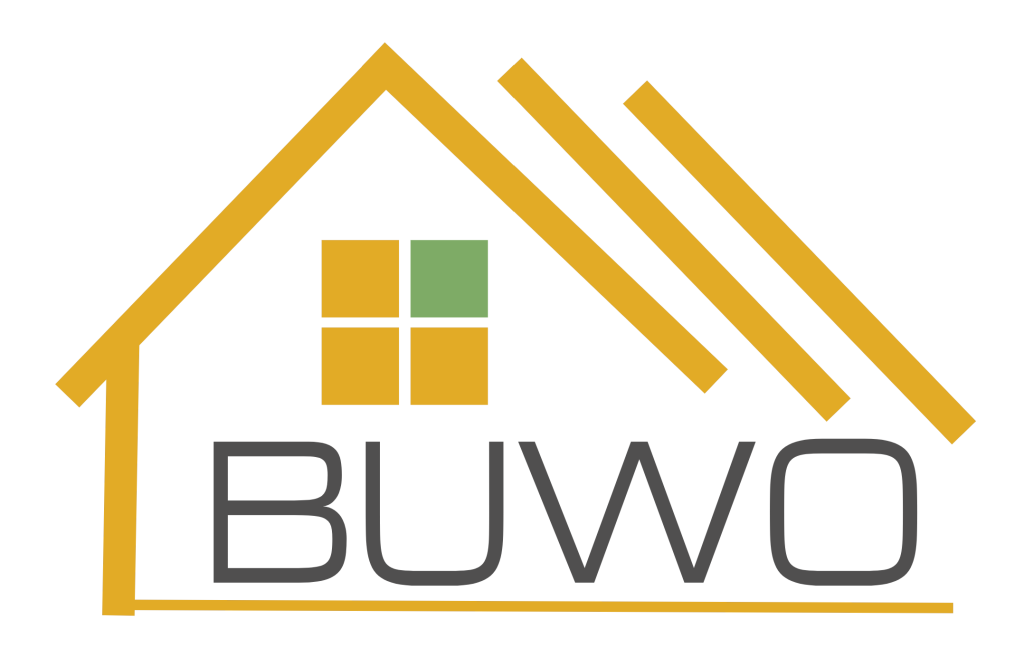
Table of Contents
I. Introduction
One of the biggest investments and choices a person will ever make is buying a home. People have the option of building a conventional house from scratch or choosing a prefabricated (or pre-engineered) house when it comes to creating a new home. Although conventional building techniques have been utilized for millennia, prefabricated homes are growing in popularity. However, what are they specifically and how do they vary from regular houses?
This article will compare the building methods, costs, customization choices, qualities, durability, and energy efficiency of prefabricated and conventional homes in order to highlight the contrasts between them. We will also detail both types of homes’ benefits and drawbacks to help you decide which one would be the best choice for you. So let’s get started!
II. Definition and description of prefabricated houses
A. What are prefabricated houses?
Prefabricated houses, also known as pre-engineered or modular homes, are constructed off-site in a controlled factory environment. The building components are manufactured in a factory and then transported to the house site, where they are assembled quickly and efficiently.
B. Types of prefabricated houses
There are several types of prefabricated houses, including panel-built, modular, and system-built homes. In panel-built homes, the walls and roof panels are built in a factory and transported to the site for assembly. Modular homes are built in sections or modules in a factory and transported to the site for installation. System-built homes are based on a kit-of-parts concept, where the entire home is constructed from prefabricated building components, including walls, floors, and roofs.
C. Advantages of prefabricated houses
One of the main advantages of prefabricated houses is the efficiency of their construction process. Since the construction takes place in a factory, the house can be completed quickly and with greater precision than traditional construction methods. Additionally, the controlled environment of the factory ensures that the building components are of a consistent quality and have been tested for durability and energy efficiency.
Overall, prefabricated houses can provide a high-quality and cost-effective alternative to traditional construction methods. In the next section, we will discuss normal (or traditional) houses in more detail.
III. Definition and description of traditional houses
A. What are traditional houses?
Traditional house, often referred to as stick-built or site-built homes, are built on-site using standard building supplies such lumber, concrete, bricks, and steel. Usually, there are multiple steps to the construction process, including site preparation, foundation building, framing, insulation, and finishing work.
B. Types of traditional houses
Single-family homes, duplexes, townhouses, and flats are just a few of the many forms of typical housing. The design and construction of typical residences are entirely up to the homeowners, who also have a wide range of customizing options. For building materials, floor plans, and finishing, they provide a choice of options.
C. Advantages of normal houses
One of the main advantages of traditional homes is their design and construction versatility. The possibility exists for homeowners to engage with architects and builders to create a home that is satisfied to their needs and preferences. Traditional houses can also be built in a range of architectural styles, from classic to modern, to suit different design preferences.
Traditional houses can, however, take longer to build than prefabricated homes, and the weather during construction might have an impact on their quality and endurance.The next section compares the building method, price, customization possibilities, and quality of prefabricated versus conventional homes.
IV. Comparison of prefabricated and Traditional houses
A. Construction process
Prefabricated houses: The building components are manufactured in a factory in a controlled environment, and then transported to the site for assembly. The installation time usually takes several weeks, but it can be faster, depending on the size and complexity of the house.
Traditional houses: The construction process takes place on-site and usually involves several stages, including site preparation, foundation building, framing, insulation, and finishing work. The construction time varies depending on the size and complexity of the house and can take several months or even years.
B. Cost
Prefabricated houses: Prefabricated houses are usually less expensive than Traditional houses, mainly due to their efficiency of construction. The labor costs are lower, as much of the home-building work is done in a factory, with fewer workers needed on the site.
Traditional houses: Traditional houses tend to be more expensive than prefabricated houses, mainly due to higher labor costs and delays in construction caused by weather and other conditions beyond the builder’s control.
C. Customization options
Prefabricated houses: prefabricated buildings can be customized to a buyer’s preferences, even though they have less options for design than traditional homes. While some companies of prefabricated construction supply a selection of floor plans that can be altered, the choice of design options might be limited compared to what is offered for traditional houses.
Traditional houses: Ordinary homes have a greater number of customization possibilities, such as design elements, floor layouts, and a large variety of materials. These enable a higher degree of personalization and control over the finished product in the house.
D. Quality and durability
Prefabricated houses: Prefabricated houses have a reputation for high quality and durability, as the components of the prefabricated buildings are manufactured in a controlled factory environment. They also tend to be highly energy-efficient due to tight construction tolerances and modern insulation materials.
Traditional houses: Depending on the building materials and techniques utilized, traditional house can range in quality and durability. Weather conditions during construction, as well as the constructors’ experience and expertise, frequently have an impact on quality.
E. Energy efficiency
Prefab and traditional homes differ in several ways concerning energy efficiency. Here are some significant differences in energy efficiency between prefabricated and traditional houses:
Insulation: Prefab homes are constructed in a factory and are designed and built to be well-insulated. They use high-quality insulation materials, and the insulation system is continuous, preventing heat loss. This makes them more energy-efficient than traditional homes, which may not have the same precise level of insulation installed on-site and may contain gaps that permit air to escape.
Design: Prefabricated homes are designed with energy efficiency in mind, as the production process allows for consistent application of energy-saving principles. The designs are typically sleek and compact, helping to minimize heat loss and optimize solar gain on the building envelope. Traditional homes may not have been designed and built with energy efficiency in mind and may feature larger, less energy-efficient windows, less insulation, and a less efficient heating and cooling system.
Energy-efficient systems: Prefabricated homes are fitted with energy-efficient heating, cooling, and ventilation systems. This equipment is carefully selected to work efficiently and reduce energy consumption. Traditional homes may not have the same energy-efficient equipment installed, and homeowners may need to upgrade their HVAC systems to improve energy efficiency.
Sustainable materials: Prefabricated homes may be built with sustainable materials, such as recycled steel, which require less energy to produce than traditional building materials like wood or brick. Additionally, customers can choose to add sustainable features, such as solar panels, to their manufactured or modular homes.
Overall, prefabricated homes are typically more energy-efficient than traditional homes due to their construction methods, design, insulation, efficient systems, and sustainable materials.
V. Pros and cons of prefabricated houses
Prefabricated houses, also known as prefab homes, are construction units made off-site and then transported to the final location for assembly. They are becoming increasingly popular due to their cost-effectiveness, speed of construction, and environmental-friendliness. However, like any other construction method, there are pros and cons to using prefab houses.
A. Pros
Cost-effective: Prefabricated houses can be manufactured in bulk, which would result in lower costs for materials, labor, and transportation. Besides, it can also save you money in the long run due to their energy-efficient designs, which can reduce utility bills.
Faster construction: Prefabricated buildings can be manufactured in a short amount of time at factories. Construction can be completed significantly more quickly than with typical residences because its components are put together on site.
Customization: The prefabricated buildings can also be customized as traditional houses.They available in a wide variety of shapes, sizes, and designs, and can be customized with different fittings and finishes.
B. Cons
Limited design choices: Even though prefabricated houses can be customized, there aren’t always many options for you to choose from, so you might not be able to obtain the exact one you want.
Transportation and site preparation costs: Prefabricated houses require transportation to the site of the building, and site preparation costs may also be high, depending on the foundation used.
Assembly may require specialized labor: Although the components of prefabricated homes are easy to assemble, specialized labor may still be required for certain tasks.
Perceived lower quality: Despite the high-quality production techniques, some people may still perceive prefabricated homes as inferior to traditional homes, which can affect resale value.
Limited durability: Particularly in some regions that have severe weather, the prefab houses might not last as long as traditional homes.
VI. Pros and cons of Traditional houses
The most common type of living space are traditional houses, often known as conventional houses. Despite their great advantages, they also have disadvantages. Here are some pros and cons of this kind of homes
A. Pros
Familiarity: One of the primary characteristics of Traditional houses is familiar. Most individuals have got used to the standard conveniences and design aesthetics of the conventional houses
Resale Value: Traditional houses typically have a higher resale value than prefabricated houses. This is because they are easier to sell, as they have a broader appeal to potential buyers.
Durability: conventional houses are often constructed to resist different kinds of weathers and other external factors, which means that they are more stronger and can last longer when it compared with some other kinds of buildings.
Plenty of Space: Compared to other forms of structure buildings, ordinary houses usually offer greater space, which is perfect for large families or anyone who requires additional space for work or other purposes.
Customization: Owning a conventional home gives you greater latitude to make it your own through customization. To suit your preferences and way of life, you can add rooms, alter the design, repaint the walls, and anything else you want.
B. Cons
Cost: When compared to other types of houses, Traditional houses are often more expensive, especially if you live in a desire location. This means that buying a traditional home can be a considerable of financial investment.
Maintenance: Though traditional houses have more space and features than other types of houses, they require more care and maintenance. Long-term, this can be time-consuming and costly..
Energy Usage: Traditional houses are less energy-efficient than prefabricated houses. And larger houses require more energy for heat, cool, and light, it can lead to higher utility bills.
Lack of Flexibility: The layout and style of typical homes are frequently predetermined. As a result, it may be challenging and expensive to make significant adjustments or renovations to the house.
Land Requirements: Traditional houses require more land compared to other types of homes, which can limit their availability in more urban or crowded areas.
In conclusion, conventional homes have benefits and drawbacks. Though their longevity and larger space, they can be expensive and require more maintenance.
VII. Conclusion
Making the best choice for a home is an important choice that can have a lasting effect on a person’s life. Whether choosing a conventional or prefabricated house, people’s needs and preferences, financial situation, location, and other factors all come into play.

